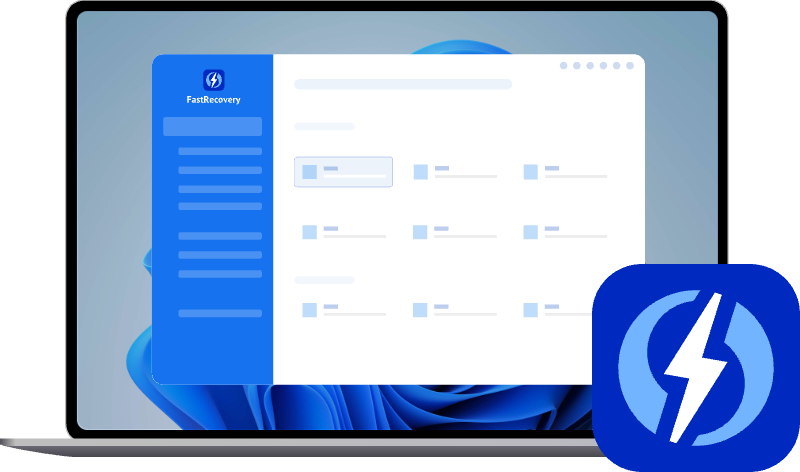[FREE] How to Recover Deleted Files From USB Quickly
Here explains why files are deleted from USB and shows you how to recover deleted files from USB in effective ways. In addition, measures to prevent data loss again will be provided too.
Have you ever accidentally deleted files on USB flash drives? Or were the files on the USB flash drives lost for other reasons?
You may want to restore it from the Recycle Bin, but files deleted from the flash drive are not in the Recycle Bin.
As we all know, a USB flash drive or pen drive is an external device, files deleted from the external device will not go to the Recycle Bin, you cannot recover these files from the Recycle Bin. So, is it possible to recover deleted files from USB flash drives? Yes, it is. Here, some effective ways will be provided to show how to recover deleted USB files on Windows 11, 10, 8, and 7.
Warning: Stop using and disconnect the flash drive as soon as you realize data loss, any read or write operation may cause more serious disaster to the data.
Reasons for USB files deleted
There are various reasons for losing data from USB and here will be a list of some common reasons for you:
✦ Human error. Users may accidentally delete/format important files when using a USB device, or make mistakes in copying or moving files, resulting in data loss.
✦ Malware or Virus Infection. When connected to computers containing malware or viruses, USB devices may be infected by these malicious programs, resulting in data deletion or tampering.
✦ Incorrect plugging and unplugging. If the user directly unplugs the USB device from the computer without safely exiting it, it may lead to file system corruption, which may trigger data loss.
✦ File system error or corruption. The file system of the USB device may be incorrect or corrupted due to various reasons (e.g. virus infection, improper operation, etc.), resulting in inaccessible or deleted data.
✦ Physical damage. USB devices that are damaged by physical impact, flooding, etc. may cause damage to the storage chip, which in turn leads to data loss.
Among them, accidental deletion is the most likely reason for data loss from USB. If the data on your USB device has been deleted, it is recommended that you first check if you have a backup and try to recover the data from it. If there is no backup, you can refer to the following ways.
How to recover permanently deleted files from USB easily
The easiest and fastest way to recover deleted files from both mobile and local devices is to use data recovery software, such as the third-party software AOMEI FastRecovery and the Microsoft tool Windows File Recovery.
▶ Method 1. How to recover deleted USB files with AOMEI FastRecovery
When you don't have a backup, the easiest way to recover your data is using a data recovery program to recover deleted files from USB. Please try AOMEI FastRecovery, it’s a free and simple solution to help you get your data back quickly in Windows 7, 8, 10, 11, and Windows Server. Please download it to see how to recover deleted files from USB flash drive.
Step 1. Select the USB flash drive.
Install and run AOMEI FastRecovery. Locate the USB drive and click Scan.
Step 2. Waiting for scanning results.
At this point, the program will automatically scan the USB flash drive for deleted files, so please wait for the scanning result. Alternatively, you can manually click on the folders to find the deleted files.
You can also use the Filter feature to search the deleted files to locate deleted files faster. It has 3 options in the following:
Type: It will contain all the file types in the local drive, such as images, videos, documents, emails, web pages, compressed files, etc.
Size: It allows you to filter file size from less than 128KB to 128KB ~1MB to 1MB ~ 512MB and above, or custom.
To recover deleted files from USB drive, MP4, for example, click Filter > Type and select Videos. Then, input MP4 in the Search for files or folders box. It will list all of the deleted MP4 files in the following window.
Step 3. Select the target files and recover.
Select the files or the folders that you want to recover from USB and click the Recover. It will display the number of files and the total file size.
There are some highlights of AOMEI FastRecovery you should know:
● Free - It supports recovering deleted files up to 500MB in total.
● Simple - It will automatically start a quick scan and deep scan to find as many of your files as possible.
● Fast and secure - It has a fast recovery speed and high success rate.
● Convenient - The deleted files will remain in their original file names, format, and path after recovery.
● 200+ file types - It helps to recover lost Word documents, Excel files, images, audio, videos, etc from USB flash drives.
Besides USB sticks, it is still able to recover deleted files from SD cards, internal or external hard drives(HDD, or SSD), etc.
▶ Method 2. UseWindows File Recovery to get back deleted files from USB
Windows File Recovery is a data recovery tool released by Microsoft, its recovery function is more powerful and can satisfy the needs of most users. But you need to learn its syntax, recovery mode, and switches, cause there is no graphical user interface. For more details, check how to use Windows File Recovery.
The syntax:
winfr source-drive: destination-drive: [/mode] [/switches]
The most commonly used switches and corresponding mode are the following:
|
Parameter/switch |
Description |
Supported mode(s) |
|
Source-drive: |
Specify the drive where the files were lost. Must be different from the destination drive. |
All |
|
Destination-drive: |
Specify the storage device and folder on which to save the recovered files. Must be different from the source drive. |
All |
|
/Regular |
Regular mode, the standard recovery option for non-corrupted NTFS drives |
Regular |
|
/Extensive |
Extensive mode, a thorough recovery option suitable for all file systems |
Extensive |
|
/n |
Scans for a specific file by using a file name, file path, file type, or wild cards. For example:
|
All |
|
/Segment |
Segment mode, recovery option for NTFS drives using file record segments |
Segment |
|
/Signature |
Signature mode, recovery option for all file system types using file headers |
Signature |
Step 1. Get Windows File Recovery from Microsoft Store and run as administrator.
Step 2. Learn the following examples and type a command suitable for your situation. Then, press Enter.
To recover “Recovery Test.docx” from G: drive (the USB drive) to E: drive, which was deleted a while ago, the right command should be as follows:
winfr G: E: /segment /n “Recovery Test.docx"
To recover the folder “Work” from G: drive (the USB drive) to E: drive, which was lost after formatting, the right command should be as follows:
winfr G: E: /segment /n Work\
Notes:
The source and target drives must not be the same.
It is compatible with cloud storage and network file shares.
This software is only available for Windows 10 and later.
If you have problems with this free software, check the Windows File Recovery troubleshooting tutorial.
How to recover deleted files from USB without software
In addition to AOMEI FastRecovery, you can also recover deleted USB files with built-in tools, including CMD, Previous Version, Windows File Recovery, or Backup and Restore.
▶ Method 1. Recover deleted files with Previous Version
The easiest way to recover deleted files without the help of other tools is Previous Versions, which is a built-in feature on Windows 7/8/10/11. You can restore the USB to previous versions. But it works only if you enable System Restore or Create File History Backup feature in advance.
Step 1. Connect your flash drive containing deleted files.
Start File Explorer, find and right-click USB drive, you can then select Properties > Previous Version.
Step 2. Here, view the list of available recovery options.
Select the previous version of deleted files or folders.
Step 3. Recover the files you need.
Click the Restore button to restore the deleted files you want.
- ★Tips:
- This method applies to recover deleted Word documents, Excel files, and other documents.
- If you use this method, you will lose all the changes made to deleted files. To recover the entire content, try to restore files from backup in Windows 10 or 11.
▶ Method 2. Restore deleted files from USB via Command Prompt
Command Prompt, also called CMD, is a Windows built-in command line tool that allows you to recover deleted files from USB by typing commands. Here, we will use chkdsk command to check and repair file system integrity and attrib to retrieve hidden files and folders.
Step 1. Plug your USB drive into your computer. Press Win + Q to open the search bar, type Command Prompt in it and select Run as administrator.
Step 2. Firstly, type chkdsk G: /f and hit Enter. (Replace G with your USB drive letter).
Step 3. And then, input attrib -h -r -s /s /d G: *.* (Replace G with the USB drive letter) and press Enter.
▶ Method 3. Find deleted files on USB from Backup and Restore
If you create a file backup just before accidentally deleted files on USB, you can try it. It helps to restore deleted files from USB stick without missing any changes. If you create a schedule automatic backup in Windows 10 or 11, it will include all the changes too.
From Backup and Restore (Windows 7):
Step 1. Navigate to Control Panel > System and Security and select Backup and Restore (Windows 7). Then, click Restore my files.
Step 2. In the Restore Files window, you can search or browse for files and folders to restore.
- Search: type part of the name of the files and select the deleted files to restore.
- Browse for files: navigate to the folder containing deleted files from Recycle Bin and select it. Then, click Add Files.
- Browse for folders: select the entire folder with deleted files.
Step 3. Select a location to restore deleted files from USB flash drive. You can choose original location or browse to new location. Then, click Start Restore.
From Windows 10 File History:
Step 1. Go to Control Panel > System and Security and click File History. Then, select Restore personal files. It will open file history recovery window.
Step 2. Click the left arrow to locate your deleted files, and click the Restore to original location icon to restore deleted files from flash drive.
Note: If you still don’t have a file backup, try reliable backup software - AOMEI Backupper Standard. It offers you multiple features to backup files automatically and professionally manage disk space.
Further reading - How to prevent accidentally deleted files from USB drive
You will never want to lose any data in the USB drive and other storage devices. You can follow x useful tips in the following:
- Create a file backup automatically. It will not only backup files currently in the USB drive but also include changes made later. Backup and Restore, File History and AOMEI Backupper Standard are great choices. I prefer the last one since it’s more flexible and makes 3-2-1 backup solution easier.
- Add a clear label for the flash drive to avoid accidental deletion.
- Use “Eject USB” to disconnect your flash drive.
- Scan and remove viruses on your flash drive with anti-virus software. Please be sure you install the latest patches and signature files.
- Keep your flash drive in a safe place. Flash drives are usually small and easy to damage, so you need to keep them in a safe place to protect your data.
FAQs about recovering deleted files from USB
✍ Do USB sticks have a Recycle Bin?
The answer is Yes. The Recycle Bin folder of USB sticks is hidden. You need to enable show hidden files from File Explorer and then check if there is a folder named $RECYCLE.BIN.
✍ Where do deleted USB files go?
Files deleted from your USB drive do not go to Recycle Bin but are deleted permanently from a logical perspective. It’s recoverable before being overwritten.
✍ Can I recover deleted files from my thumb drive using another computer?
You can recover deleted files from a thumb drive on another computer because your files are on the thumb drive instead of your computer.
✍ How to recover deleted files from USB free?
There are many methods to recover deleted files from a pen drive for free. You can use free data recovery software like AOMEI FastRecovery, Windows File Recovery, or other methods, such as CMD, Previous Version, Backup and Restore (Windows 7), etc.
Conclusion
With the above methods, you can easily recover deleted files from USB in Windows 10 or 11. The most effective method is to use data recovery software - AOMEI FastRecovery. If you want to recover files without software, try CMD, Previous Version, Backup and Restore (Windows 7), Windows File Recovery, etc.
Besides, it’s worth mentioning that you need to create a file backup if you still don’t have one. To include all the changes, please create a scheduled automatic backup. AOMEI Backupper Standard is a good choice.


